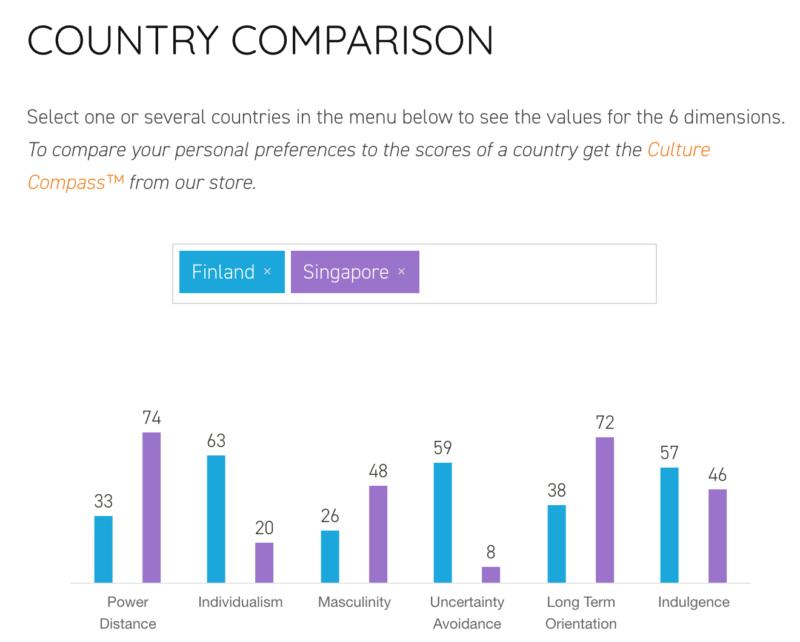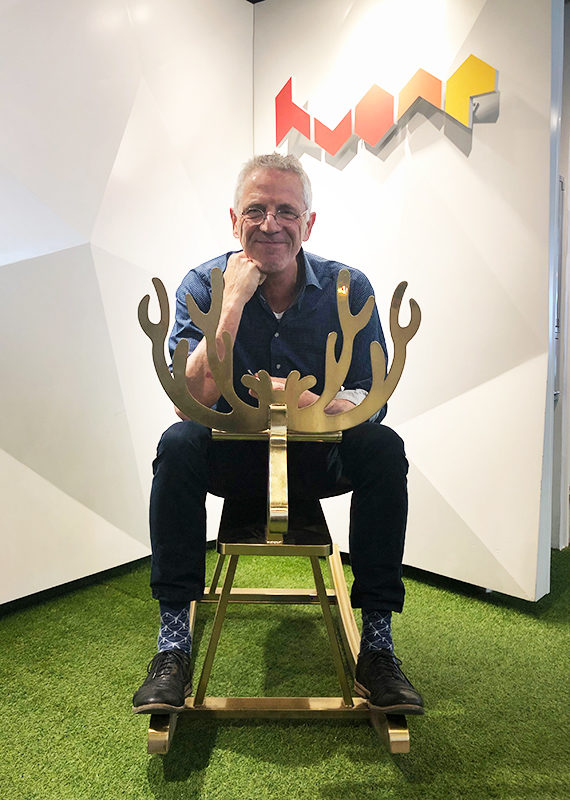Meeting and event industry is becoming more and more outcome-focused, which means that understanding more in-depth about the meeting/event itself (different purposes, human dynamics, the factors that influence the outcome of the event) is a must. HUONE helps to maximise your meeting experience and to unleash the potential of your meetings/events.
Here are some takeaways from Meeting Design Level 1 course at HUONE, 10-11 April, 2019 with Eric, one of the first meeting designers.
“Please take a moment to ‘listen’ to the walls”
Imagine a puzzled-look on everyone’s face for a moment. Then laughter followed.
This was the first thing we did starting the Meeting Design course with Eric, even before any proper introduction. We walked around the venue and ‘listened’ to the walls. The most important thing, we were told, was to imagine an actual mouth, a literal mouth somewhere on a wall talking to us! (Just like in a movie)
When we were done walking around, we shared with everyone the following sentence: “I was _________, the wall said to me _________.” (One came up with the following sentence: I was in a swing in Loistava Lounge, and it said to me “loosen up a bit, and smile!”)
1. Ask a question: How Does the Space Influence Your Behaviour?
Everybody shared their sentence, and only after the last person had shared his part, we started discussing the point of the exercise –– Venue Message.
“For most cases, as soon as you walk in (to a meeting room), you already know what to expect” one of the participants shared.
‘Venue Message’ is an answer to the following question: What kind of behaviours a room/venue stimulates?
 Eric gives an example in his book, Into the Heart of Meetings: let’s imagine walking into a Saint Peter’s Basilica in Rome or Aya Sophia in Istanbul. You are overwhelmed by a wide range of emotions. No one bursts out laughing and starts running around, or talks loudly to a friend. A space has an instant influence, which dictates certain behaviors of us; the influence on human communicative behaviour is worthwhile to note for us.
Eric gives an example in his book, Into the Heart of Meetings: let’s imagine walking into a Saint Peter’s Basilica in Rome or Aya Sophia in Istanbul. You are overwhelmed by a wide range of emotions. No one bursts out laughing and starts running around, or talks loudly to a friend. A space has an instant influence, which dictates certain behaviors of us; the influence on human communicative behaviour is worthwhile to note for us.
The same applies to a conference room, or actually anywhere; shops, homes, and etc. Let’s take another example: a networking event for an international group of 60 people. The organiser has chosen a seminar room in a gigantic conference center, so big, that the actual room tucked in the corner of the venue feels so insignificant. Moreover, the room itself is also too big for the number of people, dark, tables scattered, nothing special.. you get the picture…The venue is basically giving out a completely opposite message; there is no sign of an intimate networking session.
Wherever you are now, stop what you are doing and take a moment. Look around and listen to the wall. What is it saying to you?
For meetings and events, everything that influences the participants’ behaviour during the set time frame is relevant for the organiser, which is one of the main reasons to do site visits before the event. This is also why, during the HUONE site visits, we do not just walk around giving our customers the measurements, seating plans, checking the screens and projectors, we try to tell a story; what each room tells the participants and what kind of behaviour it stimulates.
“The Venue Message captures the influence of a building and its surroundings on the behaviour of those who are in it”, Eric de Groot, 2013
2. Use Markers and Signals to Stimulate Certain Behaviours
We will do the next activity it together. Look at the picture for a few seconds. Yes, it is a classroom.

Now,
- imagine the same picture without a whiteboard. Is it still a classroom? (YES)
- Imagine it without the windows, still a classroom? (Yes)
- How about with different flooring, maybe a grass? Still a classroom? (Yes)
- What about without the chairs and tables? (…)
Here, what happened is that you’ve recognised the chairs and tables as ‘markers’ for a ‘classroom’ which instantly stimulates a set of behavioural patterns. For instance, you would expect a ‘teacher’ to be in front of everyone, and you’d sit down, maybe pull out something to write on.
This is related to the concept of ‘Elementary Meeting.’
“Elementary Meeting has a specific name and often consists of an obligatory, tacitly agreed series of actions performed by those taking part in the meeting. It usually originates in a specific national culture”
Some examples of the elementary meeting could be weddings, court trials, Christmas dinners, and sports games etc. There are some unspoken rules, flow, and set of conventions people follow during each. Imagine going to a public sauna in Finland (what could be a better example?). How would you explain it to your colleague from England what to do, in what order, what to prepare? It shouldn’t be difficult for you if you’re a Finn.
Eric gave an example of incorporating this to a meeting context. Imagine event participants are standing in two rows at the end of a long day, facing each other, just like after an ice-hockey match. Then you ask everyone in one row to shake hands with the one standing in front, and then to step aside then do the same with the next person. The moderator does not need to say much after, people continue saying ‘meaningful’ goodbye face-to-face because they know how it goes–from a sports game!
At HUONE, the whole room can be perceived as a ‘marker.’ Every room is designed with a purpose; influence the behaviour of people in it and to unleash the potential of specific types of meetings. Imagine walking into a meeting room with swings and a grass floor, and you see a shoe rack next to the door. What would you do? And you see a board with a question: “What is your goal today?”

Small things make a big impact. We try our best to help our customers(organisers) manage this connection between the markers/signals they give to the participants and the way they subsequently behave.
3. International Meetings are Different
Global teams and international meetings bring different perspectives from various cultures and mindsets, but there are also challenges organising such events. There is a tool, Culture Compass by The Hofstede Insights, which provide insights into the consequences of culture.
 There are 6 dimensions. For instance, between Singapore and Finland, it shows the big gaps for the following dimensions: ‘Power distance,’ and ‘individualism.’
There are 6 dimensions. For instance, between Singapore and Finland, it shows the big gaps for the following dimensions: ‘Power distance,’ and ‘individualism.’
Singapore scoring high (74) on the dimension of High Power Distance means members of the society accept hierarchical order, which needs no further justification and status symbols are important to indicate social position. Low individualism score (20) means that the idea of ‘We’ is very important. People all belong to a group of some sort (e.g. Family, company, organisations etc.) The harmony of the group should be maintained and the communication is often less direct.
Example, Q&A session. How would you moderate or design a Q&A session in Singapore?
It is important for the organisers to note that there is always a considerable difference between individuals and that the statements describe the level of “values” not the “reality”; as well as that they ought to be relative.
Eric’s experience with HUONE
“HUONE deeply understands the impact of room design on meeting participants. Everything in their building supports the quality of meetings. Their rooms are a work of art. The light, the coffee, the lunches, it all fits in. And there are more works of art in their organisation: their staff members. Beautiful people that master that fine balance between proactively giving the right help and letting you, as guest, mind your own business. It was a joy conducting the Meeting Design course in this wonderful place”, Eric de Groot, Meeting Designer, trainer and author of Into the Heart of Meetings.
